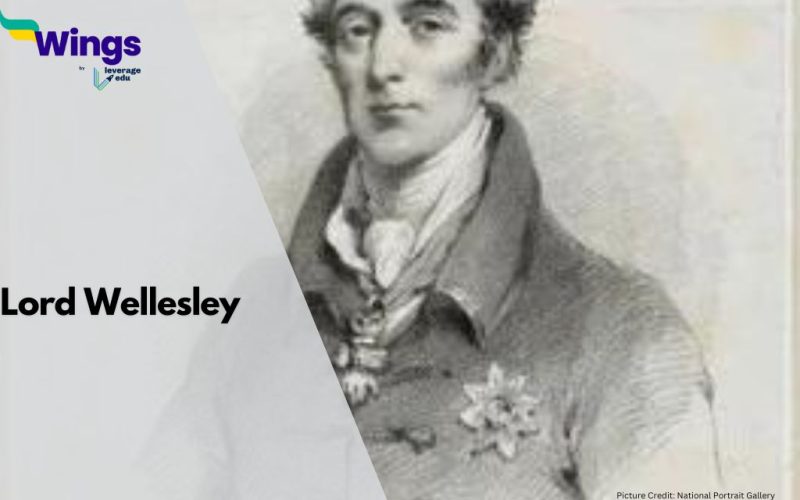The period of British colonial rule in India witnessed the presence of numerous British officials in India. They played a significant role in shaping the course of history and the then political conditions of the country. Among others, Lord Wellesley is one such remarkable administrator who is renowned for his pivotal role in numerous events in India. In this blog, we will explore the background of Lord Wellesley, the significant events during his time in India, and more intricate details.
Table of Contents
Background
Lord Wellesley, also known by the name of Richard Colley Wellesley, 1st Marquess Wellesley, was born on June 20, 1760. He belonged to an Anglo-Irish family and worked as a colonial administrator and politician. In the year 1799, he was raised to the Irish peerage as Marquess Wellesley.
Lord Wellesley served as the Governor-General of India from 1799 to 1805. Later on, he also served as Foreign Secretary in the British Cabinet and as Lord Lieutenant of Ireland in 1821. Throughout his life in Ireland, Wellesley made numerous attempts to reconcile Protestants and Roman Catholics. His reign in India is associated with numerous strategies trying to consolidate as many regions under the British regime as possible.
Significant Events Under Lord Wellesley
Below we have mentioned the significant events that happened under Lord Wellesley in India.
Subsidiary Alliance System
Lord Wellesley is recognized for his unique Subsidiary Alliance System. Implemented in the early 19th century, this policy aimed to extend British influence in India by extending its control over the entire Indian subcontinent and its princely states. According to this system, the princely states in India were required to maintain British troops in their territories by dissolving their personal armed forces. Additionally, they were required to pay for the British army’s maintenance. In return, the British extended their protection against any foreign attack or internal revolt.
So, when Indian states signed a Subsidiary Alliance, they would lose their independence and numerous other rights. As a result, thousands of soldiers lost their livelihoods, ultimately causing misery throughout the country. On the other hand, the Subsidiary Alliance System was extremely advantageous for the British forces. They were now able to keep up a significantly large army at low costs.
The first Subsidiary Treaty was signed in the year 1789. It happened between the Nizam of Hyderabad and Lord Wellesley. Similarly, the Nawab of Avadh was also made to sign and comply with a Subsidiary Treaty in 1801. In this case, the Nawab had to surrender almost half of his kingdom in return for a larger subsidiary force. However, Tipu Sultan never agreed to any of such agreements, leading to the Fourth Mysore War.
Also Read: What Was Subsidiary Alliance? Get Complete Results, Policies & Notes to Prepare
Fourth Mysore War
It was under the governor-generalship of Lord Cornwallis that the third Mysore War was fought. Although there was no significant conclusion of this war, it surely weakened Tipu Sultan’s power. Keeping the extreme humiliation and unfortunate defeat in mind, Tipu Sultan soon retaliated by increasing his military resources and taking aid from regions like France, Afghanistan, Arabia, and Turkey.
It was evident that the Treaty of Seringapatam was unable to ensure peace between Tipu and the British forces. While he refused to accept the superiority of the Subsidiary Alliance proposed by Lord Wellesley, he went ahead with forming alliances with the French.
Ultimately, Mysore was attacked from all four sides by the British forces along with Marathas and the Nizam. Tipu’s army was outnumbered and the British secured victory at the Battle of Seringapatam in 1799. Tipu Sultan died defending his title and kingdom.
Also Read: Lord Canning: First Viceroy of India, Life, Works
Censorship Act 1799
During the Governor-Generalship of Lord Wellesley, numerous newspapers were rising for the first time in the world. The Calcutta Gazette (1784), The Bombay Herald, The Calcutta Chronicle (1786), and The Madras Courier (1788) are some of the most popular examples. Lord Wellesley introduced the Censorship Act of 1799 to prevent the French from printing anything harmful to the British in any way. Accordingly, all newspapers were subjected to government scrutiny before publication.
Fort William College
Lord Wellesley was an advocate of launching educational plans in India and made numerous attempts to train Civil Servants. He established Fort Williams College on the Fort William campus on July 10, 1800. It aimed to teach Britishers about Oriental cultures, traditions, and law so that they could coordinate better.
Second Maratha War
It was during Lord Wellesley’s tenure as the Governor-General in India that the second Maratha War broke out. It is believed that one of the main causes of this war was Maratha’s resistance to the Subsidiary Alliance System of Lord Wellesley. The British forces, led by Lord Wellesley, defeated the Marathas, leading to the implementation of the Treaty of Bassein in 1802. This placed Marathas under the British Empire and thus, increased their dominion in India.
Also Read: Complete List Of Governor General Of India
Mediatization
Mediatization is another effective method by which Lord Wellesley tried to expand the Company’s territory. He accused rulers of different regions such as Karnataka, Tanjor, Surat, and Farrukhabad of maladministration and took over their territories. In return, the company provided them with pensions.
This was all about Lord Wellesley. If you wish to read more such informative blogs, check out our general knowledge page.
 One app for all your study abroad needs
One app for all your study abroad needs















 25,000+ students realised their study abroad dream with us. Take the first step today.
25,000+ students realised their study abroad dream with us. Take the first step today.

